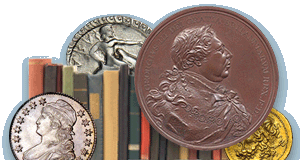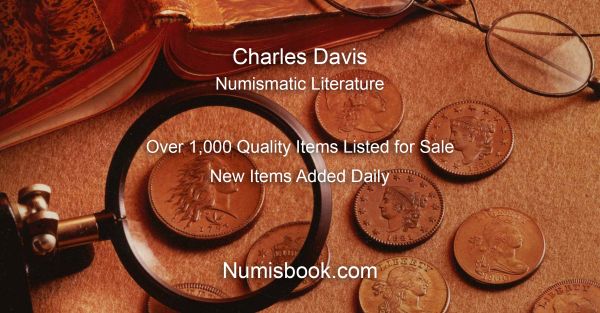
PREV ARTICLE
NEXT ARTICLE
FULL ISSUE
PREV FULL ISSUE
NEW BOOK: THE KUNINDAS AND THEIR COINSIn a Facebook post, Manish Verma of the Hinduja Foundation described their recently published book, The Kunindas and their Coins. Thanks to Paula Turner, editor of the Journal of the Oriental Numismatic Society (JONS) for notice of the new book. See the article elsewhere in this issue for more information on the latest JONS issue, which includes a review. -Editor
The Kunindas and their Coins by Shri Devendra Handa.
The objects were first discovered by canal diggers near Behat, a location in the Saharanpur district (in modern-day Uttar Pradesh, India) in 1834. These objects are now known from numerous hoards and stray finds, currently in the prized possession of collectors, museums, and institutions. Hoards refer to large collections of objects that are often buried together, while stray finds refer to items discovered randomly, not in structured archaeological excavations. The objects were also found throughout the mid-Himalayan regions of Himachal Pradesh and Uttarakhand, in the plains of Punjab, Haryana, Uttar Pradesh, and even Taxila (which is in present-day Pakistan). This wide distribution points to the far-reaching influence and trade networks of the Kuninda people. In the present work, an effort has been made to explain the significance of various devices and symbols occurring on these coins. There have been controversies regarding the religious proclivity of the Kunindas, but I have tried to establish their faith in Vaishnavism and Vedic rituals. Scholars from Cunningham have attributed the Kunindas copper coins bearing the figure of Chitresvara (Siva) seated on Apasmara-purusha which I have contested and am happy to note that more savants now agree to it. I have offered my arguments against the theory of their confederation with Yaudheya and other tribes as also their alien ethnology, generally believed by most scholars. I have been studying Kuninda coins for over forty years, and have restudied thousands of coins of the Chakkar, so-called Daruwala and Pandoa hoards besides various other private and institutional holdings. This work is the first of its kind to systematically analyse and classify the Kuninda coins in a detailed catalogue. Those interested in the economy, production of total volume by the Kuninda coins and die studies may find it quite useful. Through this series, the Foundation collaborates with leading academics and historians to bring to life our collection in a broader historical context.
To read the complete Facebook post, see:
Wayne Homren, Editor The Numismatic Bibliomania Society is a non-profit organization promoting numismatic literature. See our web site at coinbooks.org. To submit items for publication in The E-Sylum, write to the Editor at this address: whomren@gmail.com To subscribe go to: Subscribe All Rights Reserved. NBS Home Page Contact the NBS webmaster 
|

